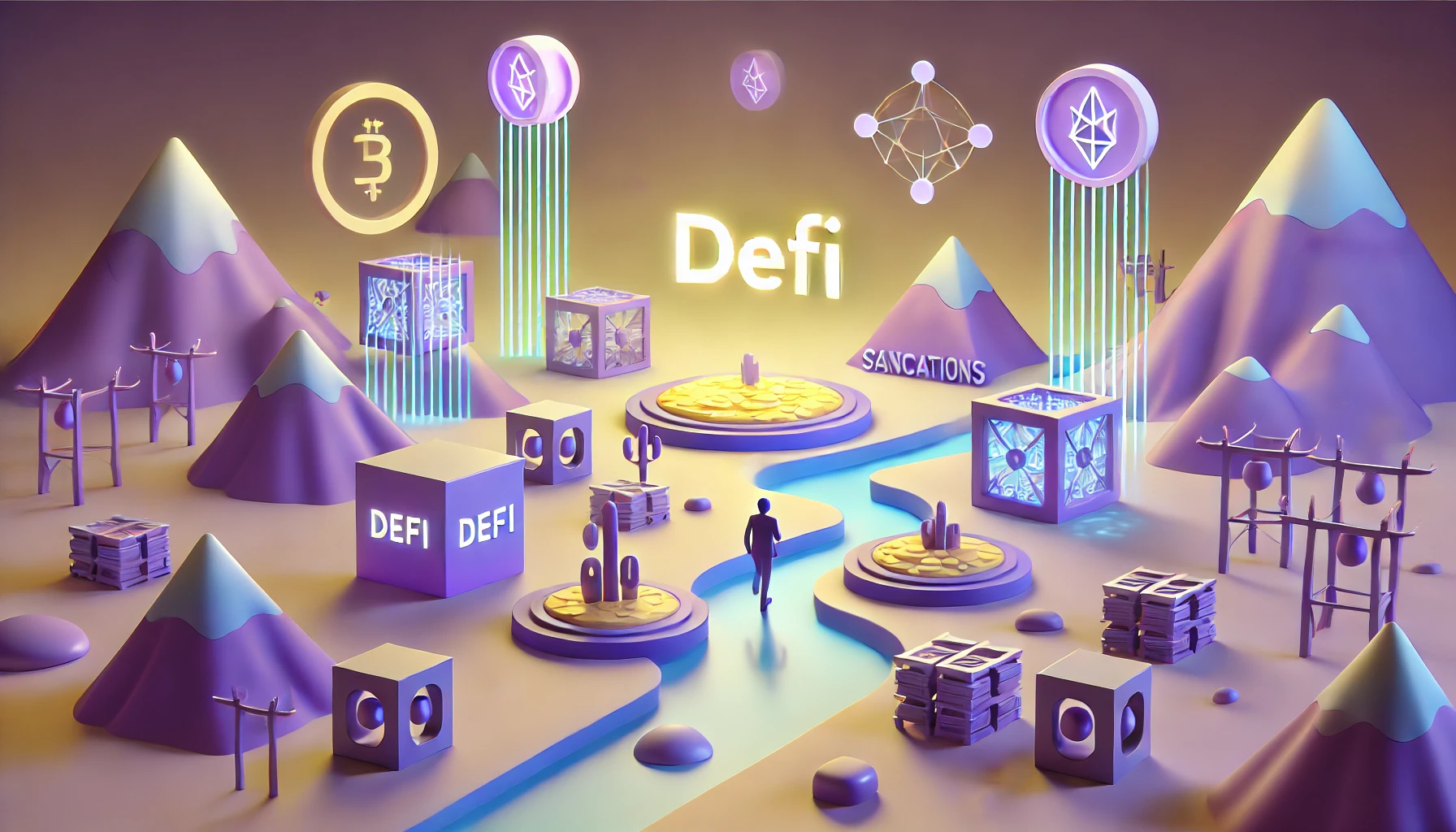Ethereum Classic (ETC), more often regarded as a simple fork of the famous and renowned Ethereum company, is in fact the original Ethereum blockchain. Ideological differences led to the creation of a fork that divided members of the Ethereum community into two camps: on the one hand, the purists who wanted to retain and operate with the blockchain’s principle of immutability and transparency, and on the other, those who wanted a modernisation that would solve certain problems linked to hijacking or other failures within the blockchain.
Since the split, these two twin blockchains have been the subject of comparisons, and each has its supporters, as well as its detractors.
What is Ethereum Classic (ETC)?
Ethereum Classic is the sister blockchain to the popular cryptocurrency, Ethereum (ETH), which follows Bitcoin in the market rankings. It came into being in 2016 as a result of a fork, a very common process in the cryptocurrency world, the aim of which is to remedy the problems that any blockchain may face as a result of disagreements within the company or other major system failures. This system refers to a branch, a division into several branches more concretely. In the cryptocurrency world, this refers to the splitting of a blockchain into two different blockchains.
There are cases of hard forks, which indicate a major divergence in consensus rules and often lead to a permanent separation of the chain, but also soft forks, which mean that the changes made to a protocol have retained a certain degree of compatibility with previous versions. In the case of Ethereum and Ethereum Classic, it was a hard fork that led to the creation of Ethereum’s sister blockchain. The aim of Ethereum Classic is to become, in the future, an effective and influential solution for connecting the largest number of devices in the world so that individuals can exchange contracts and values.
Ethereum Classic’s cryptocurrency is Ether Classic (ETC) and its tokens are used to pay the miners who take part in developing the blockchain.
How was Ethereum Classic created?
In 2016, the venture capital organisation DAO (Decentralized Autonomous Organisation) launched a smart contract with the aim of sponsoring decentralised applications from the ecosystem developed by Ethereum Classic: the Dapps. The transparency and objectives of this smart contract facilitated the sale of DAO tokens, which raised more than $150 million in just a few weeks. However, the problem with this project lay in the termination of contracts with members. To withdraw from the programme, participants had to use the Split function, which allowed them to get their ETH tokens back, but only after a period of 28 days. This wait was in itself the flaw in the system.
It was when the system fell victim to hacking that the majority of the Ethereum community, with the approval of the founders, set about creating the Ethereum Classic hard fork.
A hacker had attacked the funds of those wishing to leave the DAO and managed to steal around $50 million worth of Ether (ETH). Thanks to the hard fork, Ethereum was able to revert to the state of the blockchain before the theft occurred and recover and return to investors the capital they had invested in the company. This event marked the start of an ideological divergence between members of the community, as some considered this solution to be contrary to the decentralisation code of ethics. The latter continued to use the original blockchain, while denying the principles of the new version (supporters of Ethereum Classic).
The company’s partnerships
As the Ethereum Foundation was not on the side of Ethereum Classic, the company had to create a network of partners in order to continue its development. It entered into numerous partnerships with entities such as :
ETC COOPERATIVE: responsible for the development and marketing of the ETC ecosystem.
Ethereum Classic Consortium: responsible for promoting the fundamental values of ETC.
IOHK: specialist in mathematics and algorithms
Ethereum Commonwealth: works on the blockchain and the Classic Ether Wallet.
ETCDEV: engineers and developers working on blockchain
ETC LABS: testing laboratory for ETC innovations
How does Ethereum Classic work?
The watchword of the Ethereum Classic company is immutability. Whatever the circumstances or events, the ETC blockchain must not undergo any changes: “Code is law” (an ideology according to which a group cannot under any circumstances reform the way the network works). Despite the various ideologies and points of view, the functionalities of Ethereum and Ethereum Classic are very similar. The characteristics of the blocks and rewards (mining) of the two chains are virtually the same.
Ethereum Classic offers the ability to send sums and values to others, as well as the ability to post secure, immutable smart contracts online. The company uses an open source blockchain and its EVM (Ethereum Virtual Machine) network, which enables it to run a multitude of scripts on a global scale and provides a standard extraction based on the Ethash algorithm.
Ethereum Classic makes use of the Turing Complete programming language, which allows developers to create and run decentralised applications, as well as issuing new crypto-currencies based on the blockchain.The network relies on virtual machines to support smart contracts and also, has, an optimised virtual machine, called SputnikVM, which allows the enhancement of the Ethereum Virtual Machine (EVM) for devices with lower power consumption.
Proof of Work
This protocol uses proof-of-work validation to secure operations. The energy expended by the machine is quantified and used to determine which computers (individuals) can access privileges. New blocks are created every 15 seconds on the Ethereum Classic network. However, the number of players on the blockchain means that token mining is becoming increasingly complex and time-consuming, so the energy expended on mining is constantly increasing. This is why some miners are getting together to form groups known as “pools”, pooling their energy and computing power to collect more tokens and share them among themselves.
Here are some mining pools you can join:
ClassicPool
MinerGate
Epool
Europool
ETC-Poolcrypto
Comining
91 Pool
2 Miners
In addition to proof of work, there is also the concept of proof of stake, which is used by other cryptocurrencies, including Ethereum Classic’s first competitor, Ethereum (ETH).
Proof of Stake
The Ethereum branch, for its part, is equipped with a process affiliated to the DASH blockchain, which is none other than proof of stake. This programme works thanks to a masternode (master node), a connected computer that holds a copy of the entire blockchain system. To play the role of masternode, the individual must have a certain number of tokens in his or her possession. They then have access to certain privileges and receive rewards in tokens, but also in the form of adapted transaction fees: this is the notion of staking.
Smart contracts
The concept of the smart contract was created in the 1990s by cryptographer Nick Szabo. A smart contract is a computer protocol that directly executes a contract entered into by two or more parties when the conditions required for the contract to be fulfilled are met and honoured. It works in the same way as a traditional contract except that, unlike a traditional contract, its execution is not governed by any legal authority and it does not require the intervention of any trusted third party.
The advantage of smart contracts is that they are cheaper, faster and less complex to manage than traditional contracts.
Characteristics of Ethereum Classic (ETC) and Ethereum (ETH)
Ethereum (ETH)
Ethereum is a blockchain protocol created in 2015 by the young Canadian developer Vitalik Buterin. It is an IT platform for developing decentralised applications. The Ethereum network is considered to be a “global computer” or “supercomputer”, mainly because of the large number of interconnected computers that communicate constantly to keep it running. Unlike Bitcoin and other cryptocurrencies, which operate on the basis of peer-to-peer payments, Ethereum makes decentralised applications programmed by thousands of developers available to major companies in various sectors, including real estate, insurance, entertainment and finance.
Ethereum’s philosophy is based on the ideology of decentralising financial institutions. Financial decentralisation (DeFi) is a project for an open, global financial system built for the Internet age – an alternative to a system controlled and maintained by decades-old infrastructures and processes. To date, tens of billions of dollars worth of cryptocurrencies have been used to fund and develop DeFi applications.
Today, the community of developers working on the Ethereum blockchain is one of the largest in the world, and their work has been well rewarded, with Ether (ETH) taking second place on the cryptocurrency market behind the famous leader, Bitcoin.
Differences and similarities
There are not many differences between the initial blockchain and its fork, since the blocks of each of the two branches are identical up to block 1920000. So there are more similarities, particularly in terms of tools such as smart contracts and Dapps, as well as the coding of the blockchain and the rewards that miners receive for their work.
However, since the initial division of the blockchain, depending on the ideologies of the parties involved, differences have begun to emerge within each branch, which has had the effect of accentuating the emancipation and independence of each of the two blockchains:
Ethereum Classic, for example, has decided to retain the use of the Proof of Work protocol, while Ethereum now uses the Proof of Stake Protocol.
Ethereum can produce an infinite number of tokens, unlike its twin, which has an issue limit of between 210 and 230 million.
The advantages of Ethereum Classic
Here are the advantages of the Ethereum Classic blockchain and its ETC token in detail:
Decentralisation: thanks to its Ethereum Virtual Machine (EVM), decentralised applications (Dapps) serving the objects innovation sector (IOT) and smart contracts do not require the intervention of intermediaries or central authorities.
Transaction speed: transactions are automatically verified, so they are processed and executed as quickly as possible.
Immutability: all transactions cannot be modified or deleted once they have been entered into the blockchain database. Ethereum Classic was created as a fork because of a modification to the Ethereum blockchain.
Programmability: one of the fundamental advantages of the Ethereum Classic blockchain. It is programmable, allowing developers to create and work on applications and smart contracts.
The controversy surrounding Ethereum Classic
Ethereum Classic is often seen as a simple fork of Ethereum. Its low profile, delayed development due to a lack of resources and low level of security have made this blockchain the target of controversy and criticism from Ethereum supporters.
With the main teams and technologies siding with Ethereum, Ethereum Classic has less potential to develop its network:
The pioneering developers have sided with the other branch
The project is considered to be formally opposed to Ether
The company does not have the human resources required for its development
The migration of mining power to Ethereum has jeopardised the company’s security
Ethereum Classic has also been the victim of numerous attacks by malicious hackers. In August 2020, the blockchain suffered three 51% attacks in the space of just one month. The last attack resulted in the modification of more than 7,000 blocks and the first two resulted in the reorganisation of 3,693 blocks and 4,000 blocks respectively.
What is a 51% attack?
A 51% attack, also known as a double-spending attack, is a reorganisation of a blockchain by malicious individuals. By appropriating a significant proportion of the validation power, they are able to rearrange the chain in order to delete a payment that has been made, while keeping the asset acquired in the transaction and retaining their cryptocurrencies. This type of attack is more common on chains that operate on the Proof of Work principle, such as Ethereum Classic, where the various blocks are validated by mining, and is therefore less common on chains that use Proof of Stake.
The double-spending attack is divided into 3 stages:
Buying an asset: the pirate buys an asset when he holds a large proportion of the computing power of a network linked to a cryptocurrency and a large quantity of tokens.
Undermining a parallel chain: when the seemingly legitimate transaction to acquire the asset is completed, the pirate causes another so-called fraudulent transaction to appear in the blockchain, which spends the same amount as the first and thus brings the funds back to their origin. At the same time, he creates a parallel chain that is not visible to the rest of the network, on which the funds are transferred to his address.
Reorganisation of the chain: after the purchased good has been delivered to him, he reveals the parallel chain to the network when it becomes longer than the chain where the legitimate transaction is located because of the computing power he possesses. The chain is reorganised when the transaction present in the invalidated blocks of the first chain is put back into the mempool (the waiting area for transactions in a blockchain) and the new blocks are validated.
The subsequent attacks on Ethereum Classic have cast considerable doubt on the network’s security and shaken people’s confidence in the blockchain. It is therefore not impossible, and indeed highly likely, that Ether Classic (ETC) will be delisted from certain exchange platforms.
Ethereum Classic’s various strategies for getting back on its feet
To overcome its current flaws and shortcomings, the company had taken the initiative of implementing various measures over several timeframes.
In the immediate term, Ethereum Classic opted to step up cooperation between miners in the hope of keeping the hash rate at a reasonable level. In addition, Ethereum Classic Labs planned to improve the system’s supervision so as to detect singularities and unusual changes in the hash rate more quickly, while the section in charge of development was making progress on the ‘Permapoint’ project; a system whose mission would be to prevent chain reorganisations by hackers or anyone else. In the long term, the team envisaged integrating the PirlGuard protocol, which would double the cost of double-spending attacks, since ill-intentioned miners would come across mined ‘penalty blocks’ when they had the idea of reorganising a blockchain. These require more resources to be mined and will therefore act as a brake on the actions of hackers.
On the other hand, Ethereum Classic was planning to separate itself from the Ethash algorithm in order to make it more complex to rent hashrate on platforms, but also to differentiate itself once again from Ethereum (ETH), which uses the same algorithm. This separation is expected to take place once the Ethereum Classic hard fork is up and running. The company was considering migrating to algorithms such as Keccack-26 or Random X. More inclined towards the use of Keccack-26, the community felt that this algorithm could make ETC independent and enable it to achieve a leading position in terms of the hashrate of its own mining algorithm. The use of the Random X algorithm was given less consideration, as it would not have been able to solve all the problems faced by Ethereum Classic.
Despite the quest for independence and the desire to distinguish itself from its twin, Ethereum, Ethereum Classic Labs, an affiliate of Ethereum Classic, said it wanted to build a project in collaboration with the company Metronome that would serve as a bridge between the two blockchains: an interoperability project. An initial hard fork called Atlantis has served as the basis for this project, pending the introduction of the new hard fork nicknamed Agharta.
Agharta, the new Ethereum Classic hard fork
The Agharta project was launched in January 2020. After its launch, ETC tripled in value, reaching the €4 mark, before selling at a price in excess of €10 some time later (at the end of February). The activation of the hard fork therefore had a major impact on the price of Ether Classic, but this development is also linked to the partnerships built up by the company over the same period. The aim of this project was to make users of Ether Classic compatible with Ethereum, in order to bring the two communities closer together.
The interoperability between the two branches has enabled Ether Classic to spread among Ether users and to increase the use and acceptance of ETC tokens among individuals and particularly merchants around the world.
The main companies that use and accept ETC tokens are as follows:
Crypto-games: an online gaming site that accepts payments in cryptocurrencies
1xBet: the famous sports betting company
Smarty Scripts: a software development company
Snel.com: a cloud domain provider
Mineshop: an IT company based in Ireland
Investing in Classic Ether
Should I invest? Is it a good investment? These questions always come up when discovering any cryptocurrency on the market. There are no sure things because of the volatility of cryptoassets and predictions made today about any cryptocurrency, whether positive or even negative, may prove to be wrong in the near future.
No player can therefore be sure of reaping any profits on their initial investment or seeing the value of their chosen cryptocurrency rise.
How can I get hold of Ether Classic?
There are several options for obtaining ETC tokens.
Buying Classic Ether
Naturally, you can buy them on platforms such as :
Kraken
Binance
Coinbase
eToro
Wirex
Libertex
There are plenty of other buying platforms besides these. The choice is yours. However, before entering your payment details on a site, it is essential to find out about it, read its reviews and make comparisons with other sites to determine which is the most appropriate for the currency you are looking for and the most reliable in terms of security.
Mining ETC tokens
Like most cryptocurrencies, ETC tokens can be obtained by mining. Mining involves acquiring a great deal of computing power in order to solve mathematical problems, the result of which is the validation of transactions. Miners receive a number of tokens according to their speed, but also according to the number of tokens issued by the chosen cryptocurrency company. The rewards become lower and lower when the company has a maximum number of tokens issued, and require more computing power.
You also need to have Ethminer or Claymore Dual Ethereum software on your computer system to be able to mine ETC tokens. The quality of the machine also plays a vital role in this process, which is why it is important to have the necessary resources (quality hardware) to carry out this task (there are specialised components for mining, such as Asics graphics cards). Technically, miners perform separate operations for each block using a hash function that randomly generates strings. They then receive the tokens when the nodes examine the requested transaction.
Exchanging Classic Ether
Finally, you can also use cryptocurrency exchanges to obtain Classic Ether. It is advisable, however, to check that the platform you are using is reliable and secure, as many losses/thefts of cryptoassets take place on exotic and non-compliant exchange platforms.
How do I store ETC tokens?
To store Ether Classic, as with any other type of cryptocurrency, you need to use what is known as a cryptocurrency wallet. Wallets are essential and indispensable tools when investing in cryptocurrency because the security of your investment is partly guaranteed by them. Cryptocurrency wallets allow users to interact with the blockchain and therefore to be able to transfer, examine, and receive cryptocurrency.
Each wallet has its own wallet address, which makes it possible to send and receive tokens, and each wallet address has a public and a private key:
The public key is mathematically linked to the hash function and the private key provides access to the funds linked to a wallet address, just as a password provides access to the sums in a bank account.
The different cryptocurrency wallets
It’s important to find out about the different types of wallet before buying one to store your funds. Depending on the individual’s needs, but also in relation to risk factors, certain types of wallet will be better suited to their purpose than others. Here are the types of cryptocurrency wallet available:
The web wallet: or online wallet is provided by crypto exchange platforms and brokers for cryptocurrency storage. It allows you to access your funds and sell, exchange or receive funds through any browser connected to the internet. Its main advantage is the convenience it gives its users through its ease of access, but on the other hand, its level of security is very low because the providers of this service most of the time hold the keys instead of the wallet owners.
The mobile wallet: an application that must be downloaded onto smartphones and other mobile devices. More suited to everyday spending, it allows you to access your wallet directly on your devices but also to use your cryptoassets to make purchases in places where payments via cryptocurrencies are allowed. This type of wallet offers additional protection, in particular thanks to the password that unlocks the devices. The risk with a mobile wallet is that your device will be stolen, in which case you will no longer be able to access your wallet and your tokens and personal information will be stolen if the hacker manages to unlock your device.
Desktop wallet: software or programme to be installed on your computer. It offers much greater security than online wallets (web wallets) thanks to two-factor identification (2FA). Nevertheless, it can still be the target of viruses aimed at stealing data and hackers. To reduce this risk, it is therefore necessary to install an anti-virus and store the data recovery phrase on another device.
Hardware wallet: the hardware wallet is a highly encrypted physical device not connected to the Internet that stores the various keys to an address and makes them virtually untouchable. In terms of security, it far surpasses any other type of wallet.
The paper wallet: is a wallet in name only, since it is a simple sheet of paper on which the wallet address and the various public and private keys are written. It is impossible to be hacked with this method, but the disadvantage is that it is enough to get your hands on this sheet of paper to have in your possession all the information and elements needed to access and use an individual’s wallet.
To store Classic Ether, here are the best wallets:
Guarda wallet, Cobo, trust wallet, Atomic wallet (mobile wallets)
Coinnomi, Emerald wallet, Jaxx liberty (desktop wallets)
Ledger Nano, Trezor, SafePal, Party signer (hardware wallets)
History and current price of Classic Ether
The price of Ether Classic, like any other cryptocurrency, is influenced by supply and demand on the market. It is therefore impossible to give a precise value, as it fluctuates every second. At the time of writing, Ether Classic has a value of $27.9, with a movement of -4.91% and a trading volume of $4,272,837,497 over a 24-hour period.
Source: coinMarketCap
2016
At the launch of the Ethereum fork, Ethereum Classic, the price was quoted at €0.76, only to rebound two days later to €2.02. It then fell to €1.28, but managed to recover to around €2.28. However, after September, the share price continued to fall, with insignificant rises. Its value then stagnated below €1 for 3 months.
2017
At the beginning of the year, the ETC price reached €1.15, only to fall back to below €1. It managed to climb back up to €1.24 in February and continued to rise, reaching around €10 a chip. For five consecutive months, from May to September, the ETC remained above €10, only to fall below this level and end the year on a high, reaching a record value of €20.
2018
In 2018, Ether Classic reached its all-time high of €36.42.
2019
The price of Classic Ether fell and ended up fluctuating between €2 and €7.
2020
The price of ETC fluctuated between €3.63 and €10.14 during this year, but stabilised at around €4 and €5.
What does the future hold for Ethereum Classic and its cryptocurrency?
The problem with Ethereum Classic is that it is unable to maintain a trend over a long period. The company is currently in a period of regeneration and reorganisation. The developers are working to ensure that the network’s level of security is constantly being improved. This includes updates and the development of the Proof of Work system. Ethereum Classic certainly does not have the same level and speed of development as its twin Ethereum, and is in fact far behind the latter in terms of token value, but it is continuing to evolve at its own pace despite the many hacks, competitors and speculations.
In view of all these factors, moderate investments in this cryptocurrency should be considered. Nevertheless, Ether Classic’s progress may be very slow, but it has the merit of being secure. Ether Classic promises to be subject to some fine developments over the coming years if the company manages to increase its human and technological resources, but also to equip itself with a robust security system that is reliable enough not to be one of the reasons why investors turn away from this cryptocurrency.














